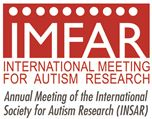Clik here to view.

Clik here to view.

Image may be NSFW.
Clik here to view.
Today at the International Meeting for Autism Research (IMFAR), microbial geneticist Ruth Ann Luna reported the first results from her team’s pioneering investigation into the intestinal microbiome’s role in autism-related GI distress and behavioral problems.
Image may be NSFW.
Clik here to view. The study is one of the first major projects funded by the Autism Speaks “Gut-Brain Research Initiative.” Dr. Luna directs the medical metagenomics program at the Texas Children’s [Hospital] Microbiome Center, in Houston.
The study is one of the first major projects funded by the Autism Speaks “Gut-Brain Research Initiative.” Dr. Luna directs the medical metagenomics program at the Texas Children’s [Hospital] Microbiome Center, in Houston.
The microbiome includes trillions of intestinal microbes that help us digest our food. In recent years, research has shown that this microbial community also helps regulate the immune system and that imbalances can affect health throughout the brain and body. In particular, some autism researchers have found that some – perhaps many – children with autism have unusual species or imbalances of gut bacteria. Still other studies have made clear that GI problems are unusually common among children with autism.
Dr. Luna’s IMFAR presentation – “A Case Study of the Gut Microbiome in ASD: Correlation of Microbial Profiles with GI and Behavioral Symptoms” – described several stand-out findings from a two-week study analyzing the bacteria found in daily stool samples from a child affected by autism and gastrointestinal (GI) issues. For comparison, the researchers also analyzed the bacteria present in the stool of the child’s unaffected sibling.
Among their notable findings:
* All of the daily stool samples from the child with autism contained four organisms that earlier research had associated with autism. These included Sarcina ventriculi, Barnesiella intestihominis,Clostridium bartlettii, and Clostridium bolteae. By contrast, none of these bacteria appeared in the stool of the unaffected sibling.
* The bacterium Haemophilus parainfluenzae appeared in the stool of the child with autism during a three-day period when the child experienced GI pain, diarrhea and a spike in challenging behaviors including self-injury.
* On a separate two-day period, another spike in H. parainfluenzae correlated with another increase in self-injurious behavior – but this time without any change in stool consistency or obvious signs of GI pain.
The appearance of H. parainfluenzae in the child’s stool came as a surprise to the researchers. This bacterium normally resides in the respiratory tract, where its overgrowth can cause ear, throat and lung infections. None of those sicknesses were present in the child or family members during the study period, Dr. Luna said.
Guidance for larger study
The primary purpose of the case study was to help the team develop the best methods for their larger autism microbiome investigation. For example, they wanted to determine whether a single stool specimen could accurately capture a child’s intestinal microbiome. In other words, does the gut’s microbial community remain stable or does it change significantly from day to day in significant ways.
Based on the intriguing results of this first case study, the researchers plan to collect daily stool samples from a subset of the study participants in the larger study underway.
“In our larger study, we hope to determine whether there are subgroups of children with autism who can be helped by having their gut microbiome characterized – in addition to the usual diagnostic tests for autism,” Dr. Luna says. “In these cases, there may be new treatment pathways that can significantly improve behavioral issues and GI distress – even when outward GI symptoms such as constipation or diarrhea aren’t obvious.”
Participants still needed
The Texas Children’s Hospital study continues to recruit children with autism and their unaffected siblings, as well as children in families unaffected by autism. Participation involves the collection of stool samples and a series of surveys and diaries completed by parents. Interested families can contact Dr. Luna at raluna@bcm.edu.
For more on this research, also see Dr. Luna’s blog: “A gut feeling: Unlocking the mysterious of autism with Autism Speaks.”
Image may be NSFW.
Clik here to view.
For more coverage from IMFAR 2016, click here.
More photos from IMFAR below.
Image may be NSFW.
Clik here to view.
